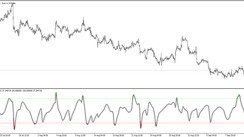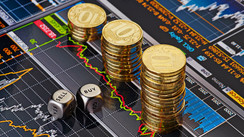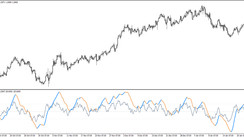The dollar remains in force ahead of the publication (at 13:30 GMT) of the monthly data on US employment. Since the opening of today's trading day, the DXY dollar index has been growing, being near the middle of the range between the local multi-month high of 96.94 and the local low of 95.54, reached earlier this week.
As of this posting, DXY futures are traded near 96.25, while market participants overestimate Powell's recent statements about the possibility of an earlier rollback of the QE program and the outlook for the market as a whole, given the unexpected risks due to the new more infectious strain of the omicron coronavirus discovered in South Africa.
The dollar is also getting support from strong macro data released this week. So, according to published last Wednesday by the Institute of Supply Management (ISM), the purchasing managers' index (PMI) for the US manufacturing sector in November rose to 61.1 (against 60.8 in October and the forecast of 61.0). The index is well above 50.0 points, which separates the zone of growth in activity from the zone of its decline, and signals a strong increase in manufacturing activity, while companies reported the first signs of easing supply tensions. Demand for goods also remained strong in November, with the ISM manufacturing new orders rising to 61.5 from 59.8 in October. At the same time, the ISM employment index rose to 53.3 from 52.0 in October.
These very strong values indicate the continued improvement of the US economy, in particular its manufacturing sector, after positive employment data from the ADP, according to which the rate of creation of new jobs in the US private sector in November remained quite high. As reported in ADP, the number of jobs in the private sector in November increased by +534,000 (against the forecast of +525,000 and the previous value of +570,000). "The labor market continued to recover in the past month, despite all the difficulties", - commented in the ADP.
Signs of an improvement in the US economy and a stronger labor market could heighten expectations of the Fed raising interest rates, pushing its leadership to end the stimulus program earlier. As you know, following the meeting that ended on November 3, the Fed leaders decided to reduce the volume of purchases of assets, which amounted to $ 120 billion a month, by $ 15 billion in November and December. In their opinion, such a cut, "is likely to be appropriate every month", although they are willing to adjust the pace of the withdrawal of purchases, "if it is justified in view of changes in the outlook for the economy". If after the December meeting, which will be held on December 14-15, the Fed leaders accelerate the pace of reduction in asset purchases, for example, to $ 30 billion a month, then the QE program may be completed by March, which will increase the likelihood of an increase in interest rates in the first half of next year. And this prospect creates the preconditions for further strengthening of the dollar.
Now investors are buying the dollar, already counting on the fact that the Fed will raise interest rates three times next year. Next week (December 10), the inflation report will be released, which could push the Fed to more rapidly curtail asset purchases. US consumer inflation is expected to slow slightly in November, but remain strong.
According to data released last month, the consumer price index (CPI) gained 0.9% in October, while the index rose 6.2% over the past 12 months. The core index (Core CPI), which excludes volatile food and energy prices, showed an annual growth of 4.6%. Both indicators showed the most significant annual growth in more than 30 years.
It is expected that in November, 550 thousand new jobs were created outside the agricultural sector, which is 20 thousand more than last month, and unemployment fell another 0.1% to 4.5%.
With signs of a rapid recovery in the labor market and persisting high inflation, the Fed is now more likely to raise interest rates next year, and quite possibly as early as next summer. And this prospect creates the preconditions for the further strengthening of the dollar and its growth against its main competitors in the foreign exchange market, in particular the euro.
Meanwhile, the pace of business activity in the Eurozone is accelerating, despite rising inflation and persisting problems in the supply chain for raw materials and components. Demand for European industrial products and new orders are also high.
According to a truncated inflation indicator that excludes the most volatile prices (usually food and electricity), inflation in the Eurozone was 2.4% in October. This suggests that inflationary pressures have not acquired the same magnitude in the Eurozone as, for example, in the US, where it is 4.1%, or in the UK, where inflation is 3%.
The current situation with inflation and the state of the European economy is unlikely to change the focus of the ECB on maintaining super-soft monetary policy conditions. As the head of the ECB Christine Lagarde said today during the online conference Reuters Next, a rate hike in 2022 is "very unlikely". Economists do not expect the ECB to decide to raise interest rates even in 2023, and inflation in the Eurozone may fall below 2%.
The only thing economists are expecting from the ECB's December meeting is confirmation that the Emergency Asset Purchase Program (PEPP) will be completed in March 2022, although this also remains open to question.
Thus, the general trend in the EUR / USD dynamics remains downward. The current growth of the pair can be regarded as corrective, which was provoked, mainly, by the sharp drop in European stock indices at the end of last month.






